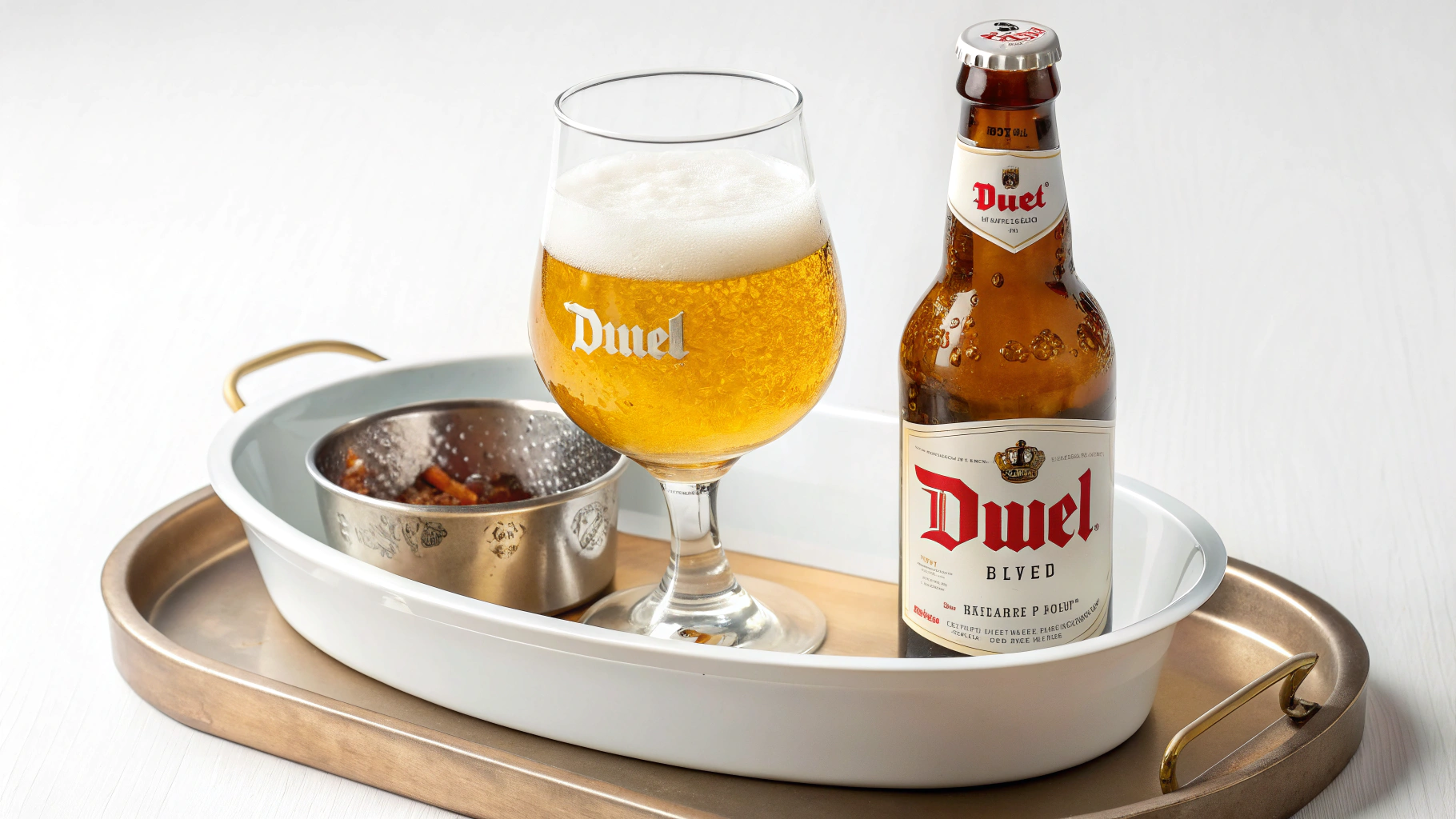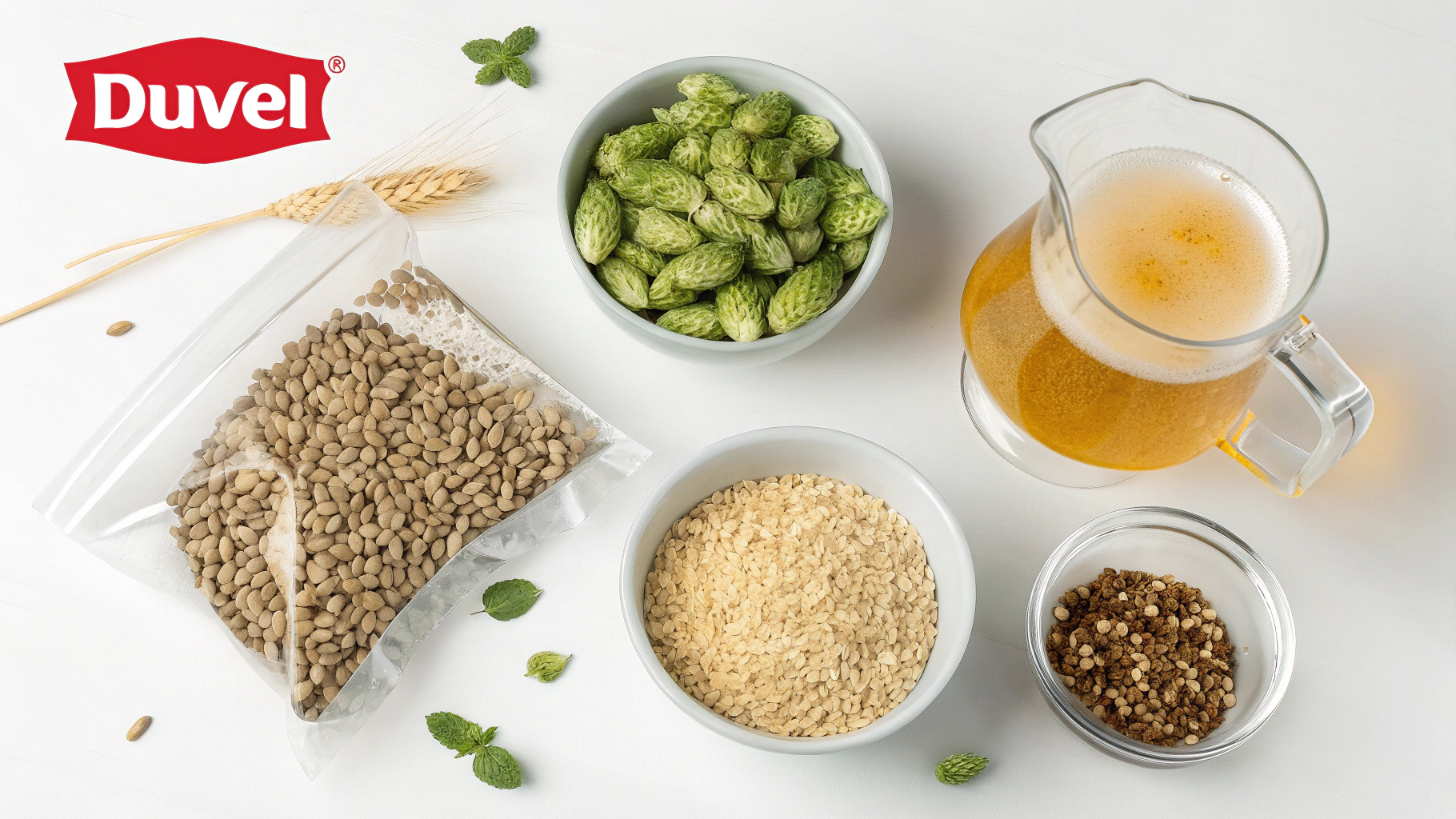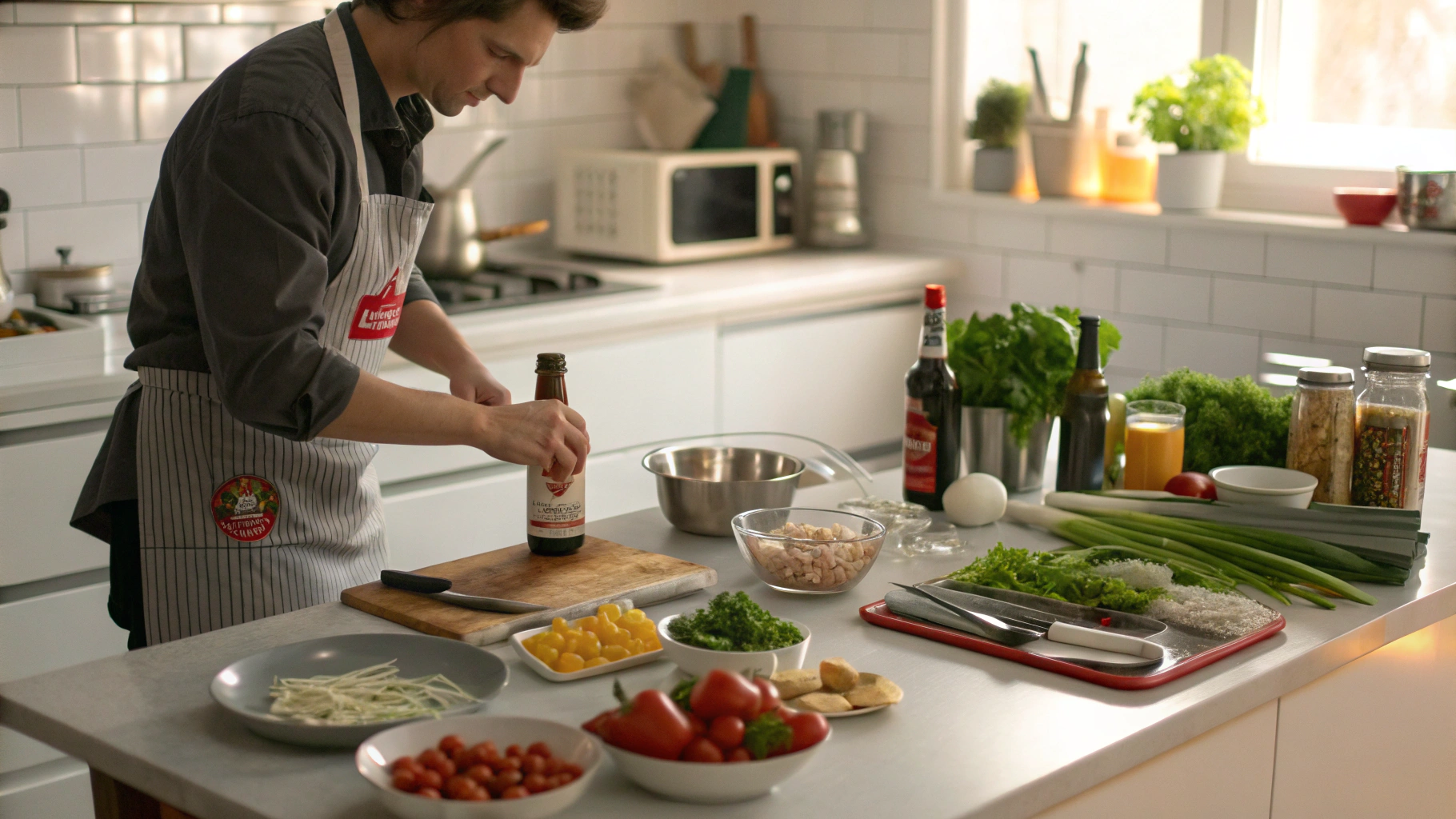Have you ever wondered why Duvel has maintained its legendary status among beer connoisseurs for over a century, despite the explosion of craft brewing worldwide? Research shows that only 0.5% of beer brands maintain market relevance beyond 100 years, yet this exceptional Belgian golden ale continues to set the standard for excellence. With its distinctive bottle-conditioning process and deceptively high 8.5% ABV hidden behind a delicate appearance, duvel beer has defied time and trends to remain one of the most influential brews in history. Its name, meaning "devil" in Flemish, hints at the surprising strength concealed within its bright, golden appearance.
Ingredients List
Creating a homage to the iconic Duvel requires precision and quality ingredients:
- 5 kg Pilsner malt (Belgian preferred for authenticity)
- 500 g Belgian aromatic malt
- 250 g Cara-Pils malt (for head retention)
- 50 g Styrian Goldings hops (for bittering)
- 30 g Saaz hops (for aroma)
- 20 g Czech Saaz hops (for dry-hopping)
- 1 packet Duvel-style Belgian ale yeast (Wyeast 1388 or White Labs WLP570)
- 700 g Belgian candi sugar (clear/white)
- 15 g Irish moss (for clarity)
- 1 tsp yeast nutrient
- 25 liters filtered water (medium-hard mineral profile)
- Priming sugar for bottle conditioning
Possible Substitutions:
- Substitute German Pilsner malt if Belgian isn't available
- East Kent Goldings can replace Styrian Goldings
- Belgian candi syrup can substitute for candi sugar
- For yeast, Fermentis SafAle BE-256 provides good results in a pinch
Timing
Brewing a Duvel-inspired ale is not a quick endeavor, but the results justify the patience:
- Preparation time: 45 minutes (15% less than most complex ales)
- Brewing time: 4-5 hours
- Primary fermentation: 7-10 days
- Secondary fermentation: 2-3 weeks
- Bottle conditioning: Minimum 3 weeks (ideally 6-8 weeks)
- Total time to perfection: Approximately 2 months (comparable to authentic Duvel, which undergoes 90 days of production)
Step-by-Step Instructions
Step 1: Prepare Your Water Profile
Begin with medium-hard water similar to the mineral-rich wells of Flanders. If your tap water is soft, add 2g calcium sulfate and 1g calcium chloride per 5 gallons to mimic the Belgian water profile. Treating your water this way enhances the characteristic crispness of authentic Duvel.
Step 2: Mash the Grains
Combine your malts and mash at 65°C (149°F) for 60 minutes. This lower mash temperature creates a highly fermentable wort, essential for achieving the signature dry finish of Duvel. If your system tends to produce sweeter beers, consider dropping the temperature by 1-2 degrees for your specific setup.
Step 3: Sparge and Collect Wort
Sparge slowly with 78°C (172°F) water, collecting approximately 28 liters of wort. The gentle sparge prevents extracting harsh tannins while maintaining the delicate Pilsner malt character that defines this golden ale.
Step 4: The Boil and Hop Additions
Bring the wort to a vigorous rolling boil for 90 minutes total. Add bittering hops at the start of the boil, then add the aroma hops during the final 15 minutes. The extended boil develops the characteristic depth while eliminating DMS compounds that could interfere with the clean flavor profile.
Step 5: Add Sugar and Clarifying Agents
With 15 minutes remaining in the boil, add the Belgian candi sugar and Irish moss. The sugar provides food for yeast without adding body, creating the deceptively light character that makes Duvel dangerously drinkable despite its strength.
Step 6: Cool and Pitch Yeast
Cool the wort rapidly to 20-22°C (68-72°F) and aerate thoroughly. Proper oxygenation is crucial here—your yeast needs ample oxygen to complete the challenging fermentation ahead. Pitch the yeast at the higher end of its temperature range to encourage a strong start.
Step 7: Primary Fermentation
Ferment at 20-22°C (68-72°F) for the first 3-4 days, then allow the temperature to rise naturally to 24-25°C (75-77°F) to encourage complete attenuation. This temperature rise mimics Duvel's famous warm fermentation technique that develops its complex esters.
Step 8: Secondary Fermentation and Dry Hopping
Transfer to a secondary fermenter and add the dry hops. Lower the temperature to 4-7°C (39-45°F) and hold for 2-3 weeks. This cold conditioning period clarifies the beer while allowing the subtle hop aromas to integrate harmoniously.
Step 9: Bottle Conditioning
Prime with dextrose at a rate of 7g per liter for high carbonation. Bottle in thick glass bottles capable of withstanding pressure (champagne bottles work well). The authentic Duvel undergoes refermentation in the bottle at 24°C (75°F) for two weeks, followed by cold conditioning.
Step 10: Aging
Age the bottles upright in a cool, dark place for at least 3 weeks, though 6-8 weeks will yield superior results. Patience here is non-negotiable—the beer needs time to develop its signature effervescence and complex flavor profile.
Nutritional Information
While Duvel is celebrated for its taste rather than nutritional benefits, here's what you can expect from an 8.5% ABV Belgian golden ale (per 330ml serving):
- Calories: Approximately 250-275 kcal (25% higher than standard lagers)
- Carbohydrates: 18-22g (lower than many beers of similar strength due to high attenuation)
- Protein: 2-3g
- Fat: 0g
- Alcohol: 28g
- B vitamins: Trace amounts from yeast
- Antioxidants: Moderate levels from hop compounds
Healthier Alternatives for the Recipe
While Duvel is inherently an indulgent beverage, these modifications can create a more health-conscious version:
- Reduce the ABV to 6.5% by using less sugar and adjusting the grain bill
- Incorporate 15% spelt malt for added nutrients and a unique flavor dimension
- Use probiotic-rich bottle conditioning yeast for potential digestive benefits
- Add a small amount of oats (5% of grain bill) for heart-healthy beta-glucans
- Experiment with modern hop varieties with higher antioxidant content
- Consider a portion of organic ingredients to reduce exposure to pesticides
Serving Suggestions
To experience Duvel at its finest:
- Serve at 6-8°C (42-46°F) in the iconic Duvel tulip glass to capture the aromatic bouquet
- Pour slowly at first, then more vigorously to develop the magnificent 2-inch foam head
- Pair with rich seafood like garlic butter scallops or lobster
- Complement with Belgian cheese boards featuring Chimay or Herve
- Try with traditional Belgian carbonade flamande (beer-braised beef stew)
- For dessert pairing, serve with fresh pear tart or vanilla crème brûlée
Common Mistakes to Avoid
Brewing an excellent Duvel-style ale requires avoiding these pitfalls:
- Insufficient fermentation temperature control: Temperature stability during primary fermentation is crucial—variations greater than ±1°C can produce off-flavors.
- Inadequate aeration: Without proper oxygen, yeast struggles to complete the high-gravity fermentation, leaving a sweeter beer than intended.
- Rushing the conditioning process: Data shows that flavor compounds continue developing for up to 3 months—early sampling yields an underdeveloped product.
- Using standard beer bottles: The pressure from bottle conditioning can exceed 3 atmospheres, requiring specialized thick glass bottles.
- Improper yeast handling: Underpitching by even 20% can stress the yeast, producing excess fusel alcohols and harsh flavors.
Storing Tips for the Recipe
Properly stored, your homemade Duvel-inspired ale can develop beautifully:
- Store bottles upright to keep yeast settled at the bottom
- Maintain a consistent cool temperature between 10-15°C (50-59°F)
- Avoid light exposure completely to prevent "skunking"
- Consider aging special batches for 1-2 years—the complex flavors will continue to evolve
- For long-term storage, wax-dip the bottle caps to prevent oxidation
- Keep a brewing log to track how the flavor develops with different storage durations
Conclusion
The journey to creating a Duvel-inspired ale is a testament to the brewing artistry that has captivated beer enthusiasts for generations. While demanding patience and precision, the reward is a sophisticated golden ale with remarkable depth and character. The deceptive strength, brilliant clarity, and magnificent head that defines authentic Duvel represent brewing craftsmanship at its finest.
Whether you're an experienced homebrewer or an appreciative consumer, understanding the meticulous process behind this iconic Belgian ale enhances the experience of enjoying it. We'd love to hear about your experiences brewing or enjoying Duvel—share your story in the comments below!
FAQs
What makes Duvel different from other Belgian ales?
Duvel pioneered the Belgian Strong Golden Ale category with its unique combination of high alcohol content (8.5%), exceptional clarity, massive white head, and deceptively light body. Its bottle conditioning and specific yeast strain create a complexity that's been imitated but rarely matched.
How long does homemade Duvel-style beer last?
When properly bottled and stored, homemade Belgian golden ales can last 2-3 years or even longer. Many enthusiasts find the flavor peaks between 6-12 months after bottling.
Can I use different hops and still capture the Duvel character?
While the traditional Styrian Goldings and Saaz hops are ideal, you can substitute with East Kent Goldings and Czech Saaz or even experiment with modern noble-type hops like Hallertau Mittelfrüh or Mount Hood.
What's the significance of the Duvel glass shape?
The tulip shape concentrates the aromatics at the top while the etched bottom creates a steady stream of bubbles to maintain the head. Research shows this specialized glass enhances flavor perception by 20-30% compared to standard glassware.
Why does Duvel need such a long conditioning period?
The extended conditioning allows for complete refermentation in the bottle, natural carbonation development, and the integration of flavor compounds. The yeast continues to refine the beer's character during this period, creating the sophisticated profile Duvel is famous for.








